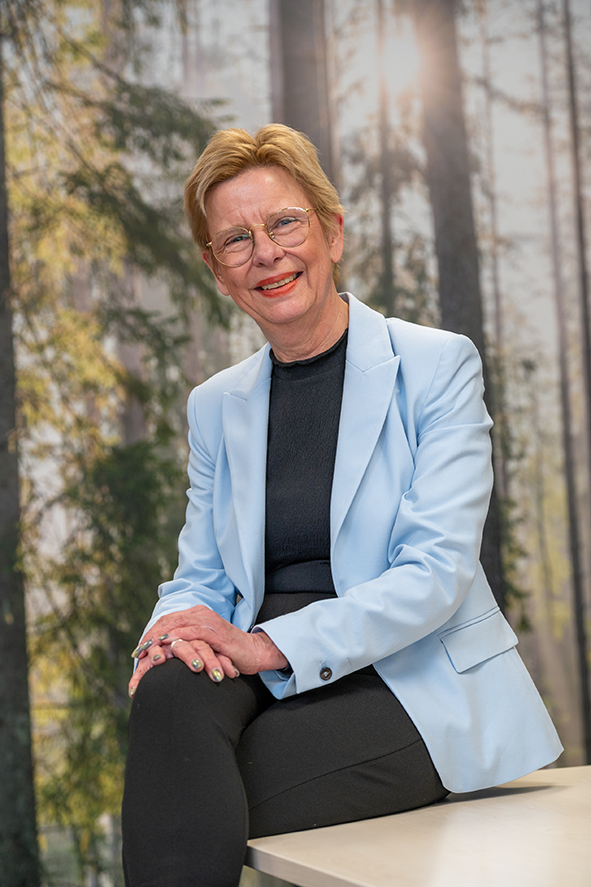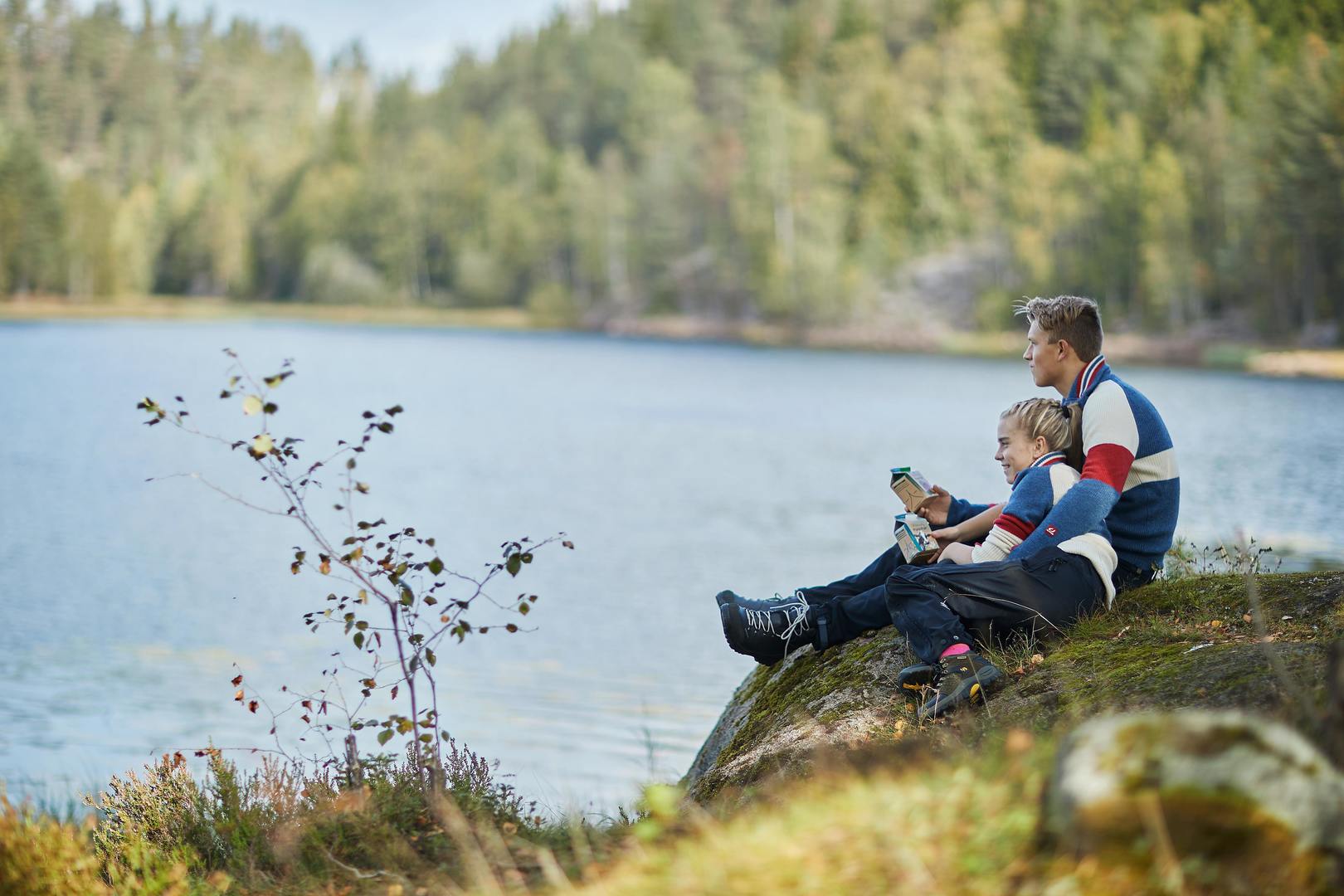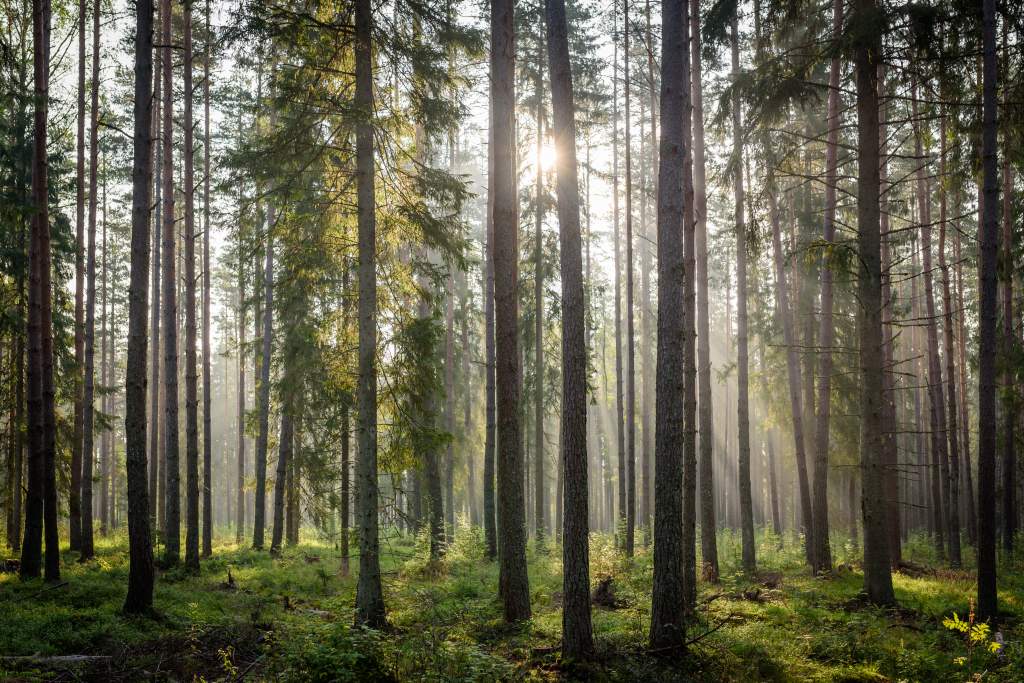Renewability and recycled content

Renewability is important to Elopak because we are an inherent part of this world, and we have a responsibility to maintain the scarce resources of our planet.
According to Global Footprint Network, humanity’s demand for ecological resources and services exceeds what Earth can regenerate. Every year they calculate Earth Overshoot Day, being the day when that year’s resources have been spent. In 2021, this day fell on July 29. Needless to say, a more responsible use of resources is critical. Resources come in two types – renewable and finite. Renewable raw materials, such as those used to produce our cartons, are naturally regenerated and help ensure resource availability for future generations. In addition, these materials lead to significantly lower greenhouse gas emissions compared to fossil or other finite resources. An important element in reducing the extraction of natural resources is reusing the resources already extracted. The push to shift from a linear to a circular economy has been going on for years, and a lot of research and development goes into enabling materials to be used multiple times without compromising quality and safety for the consumer. For Elopak, the combined use of renewable and recycled materials fits perfectly. It allows for reduced GHG emissions, reduced use of finite materials, and increased use of materials already extracted, in addition to securing the most important criteria to any food packaging producer – food safety.
Approach
We have a systematic approach to renewability in our supply chain through our Raw Material Sourcing Policy, owned by the procurement department. We also have clear targets and KPIs established in our sustainability program (read more here). Through Science Based Targets and our RE100 membership, we have committed to continue sourcing 100% renewable electricity for all our global operations.
An Elopak carton consists of an average of 85% paperboard sourced from northern hemisphere forests. Forests are naturally renewable because trees grow organically, but they are only renewable if responsibly managed. Since our primary raw material originates from the forests, we take responsible forest management very seriously. Read more about forestry here.
The second most prevalent material in our cartons is polymers, originally made from fossil resources. In 2014, Elopak launched the first fully renewable carton. We continue to develop and improve our offering through a responsible choice of various feedstocks, obtaining certification of a wider range of products, and ensuring responsible practices behind the raw materials through certification.
Food safety remains a priority and must be carefully considered before moving towards recycled content in food packaging.* Elopak is engaging with partners in the supply chain to develop and deliver products from polymers based on feedstock input from recycled plastics without compromising food safety.
The importance of renewability and recycled content for Elopak is confirmed by key stakeholders such as NGOs, industry associations, current and upcoming regulations, as well as our key suppliers and customers. Read more about how we gather their input here.
*: regulated by EC/1935/2004 on materials and articles intended to come into contact with fhttps://sustainabilityreport2021.elopak.com/tables/elopak-stakeholder-approach/ood, and EC/2023/2006 on good manufacturing practice for materials and articles intended to come into contact with food.
Performance
Targets
100% renewable or recycled content materials in all beverage cartons on the European market, and available in other markets, by 2030
50% of all fresh milk cartons in Europe fully renewable by 2025

KPIs | KPI reference |
a) % Renewable materials used, by weight, global b) % Recycled materials used, by weight, global c) % Renewable or recycled content materials in cartons sold, European market d) % of fresh milk cartons in Europe fully renewable | GRI 301-1 GRI 301-2 Self-defined Self-defined |
Status 2021 | |
a) 85% b) 0% c) 83% d) 22% |
Since we launched the first fully renewable cartons in 2014, volumes have significantly increased. It is a great success, with several large brand-owners launching products in fully renewable cartons, significantly lowering the carbon footprint of their packaging.
Inge Eggermont, Specialist Manager Sustainability

Our Pure-Pak® cartons keep products fresh while using less plastic than alternatives. Elopak strives to reduce the plastic content of cartons, and our customers can already go “fossil-free” with renewable polymers. The main feedstock used for renewable PE in 2021 was tall oil, a residue from paper production.
In 2021, we did not use recycled material in our primary packaging. However, we started a project with a supplier to phase in certified circular polymers (through chemical recycling/feedstock recycling) in our products.
Moving forward
Elopak has an ambitious goal of 100% renewable or recycled content materials in our cartons on the European market by 2030. Reaching this target requires new ways of thinking, collaboration with partners, and an ever-increasing focus on product development. It also requires cross-value chain work to make sure new and more sustainable products are being placed on the market.
Elopak is engaging in research projects exploring raw materials for developing innovative and more sustainable packaging materials. Environmental impacts are assessed already in the early stages of any product developments at Elopak.
Elements to consider when moving towards recycled content in food packaging include the risk of contamination from unknown chemicals in post-consumer waste and limited access to high-quality recycled material, an issue recognized by the EU Joint Research Center in a publication from January 2022.
As for renewable polymers, we evaluate different feedstocks, aiming for solutions with the lowest environmental impact, such as being a residue or waste product and avoiding other consequences such as deforestation or food competition. An excellent example is tall oil-based feedstock, sourced mainly from Nordic forests, which enables us to offer a carton based entirely on wood. All our wood is 100% sourced from responsibly managed forests and other controlled sources, in accordance with the FSC™ standards.
An alternative feedstock being evaluated is Used Cooking Oil, which fits our requirements for sustainable feedstocks. We are also in the process of making the barrier layers in aseptic cartons available as renewable. We also aim to introduce certified recycled polymers (through chemical recycling/feedstock recycling) in closures during 2022.
*The Forest Stewardship Council™(FSC™). FSC™ C081801. Look for FSC certified products – the mark of responsible forestry. www.fsc.org
NEPP Project – Next Generation Pure-Pak
Elopak is engaged in a research project with RISE PFI and RISE AB, funded by the Research Council of Norway, called NEPP (Next Generation Pure-Pak®).
Read moreFuturePack
Elopak took part in a long-term research project called “FuturePack,” running from 2017 to 2020/21.
Read more
Forestry and biodiversity
When forests thrive, people, climate, and biodiversity thrive. The worlds’ forests are increasingly recognized as one of the best nature-based solutions to address the climate crisis.
2021 was an important year for forestry. The European Union issued its 2030 Forest Strategy in July and measures to curb deforestation in November. During COP26 (the United Nations climate change conference) in Glasgow in November 2021, world leaders pledged to increase support to end deforestation by 2030 and to increase funding for forest protection by indigenous peoples.
Forests are home to three-quarters of the planet’s life on land and provide clean air and water. Trees play a vital role in the carbon cycle, absorbing carbon dioxide (CO₂) from the atmosphere and producing oxygen. They are also crucial for biodiversity. According to WWF, they are home to more than ¾ of all life on land. Several species have become extinct over the past few decades, and thus maintaining healthy, wild forests is essential to preserving endangered species. Therefore, it is important to ensure sustainable forestry. We believe wood-based products are fundamental for a low carbon circular economy, including short-lived wood-based packaging products, notably in substituting their fossil-based counterparts.
However, wood is also a valued raw material for timber used to produce houses and furniture. Residues from the sawmills and undersized wood and forest thinnings can be used to produce paper, such as the paperboard used to make Elopak’s cartons. In fact, the paper-making process produces natural bio-energy as well. A residue from the process, crude tall oil, can be further refined into bio-naphtha, a naturally renewable feedstock that can be used to produce polymers for use in the carton barrier and closures. This allows us to produce a carton entirely based on naturally renewable forests.
Paper-based products are crucial for using the whole tree in a resource-effective way. Different types of products are produced from one tree, and Elopak’s suppliers ensure that new trees are planted after harvesting.
It may seem like a contradiction. Why use forest material to make products when trees are so important to life on this planet? It certainly requires a balance. A balance between forest conservation and responsible forest management, which can help protect vulnerable forest areas, incentivizing the protection of illegal logging and destruction of natural habitats. A balance between harvesting and replanting. Not taking more than necessary to sustain people’s needs without excess. It also requires understanding where the raw materials come from and setting strict requirements for sourcing, such as through specific sourcing policies.
Elopak welcomes initiatives to protect forests and biodiversity, takes a clear standpoint against illegal logging, and requires all forestry behind our cartons to be legal and responsible. This is how we ensure that our main raw material is truly renewable and, therefore, will be available for generations to come.
FSC™ established in Norway
There is increasing interest for Forest Stewardship Council™ (FSC) certification in Norway, and work is currently underway to establish a national FSC office in Norway.
Read more
